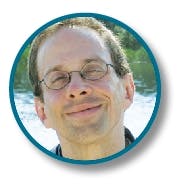In the paper, the authors present a deep learning-based hematological human aging clock, a biomarker that predicts the biological age of individual patients. This big data study uses a dataset of Canadian, South Korean and Eastern European blood test records, and company representatives say that the model “predicts the age better than models tailored to the specific populations highlighting the differences of subregion-specific patterns of aging. In addition, the developed clocks were shown to be a better predictor of all-cause mortality than chronological age.”
“If we are to develop actionable biomarkers of aging, we need a comprehensive and robust approach. Such an approach can only be developed using a large number of samples from multiple populations. We are working on multiple biomarkers using deep learning and incorporating blood biochemistry, transcriptomics, and even imaging data to be able to track the effectiveness of the various interventions we are developing.” says Polina Mamoshina, a senior research scientist at Insilico Medicine.
“Development of effective biomarkers of age lays the foundation for efficient preclinical and clinical evaluation of potential healthspan-extending interventions,” says Franco Cortese, co-author of the paper and Deputy Director of the Biogerontology Research Foundation. “Humans live a long time, and testing the effect of gerontological interventions in humans using lifespan gains as the main criterion for success would be wildly impractical, necessitating long and costly longitudinal studies. By developing accurate biomarkers of aging, the efficacy of potential healthspan-extending interventions could instead be tested according to changes in study participants’ biomarkers of age.”
Cortese continues: “While significant attention is paid to the development of highly accurate biomarkers of aging, less attention is paid to developing actionable biomarkers of aging that can be tested inexpensively using the tools at hand to the majority of researchers and clinicians. We developed the deep learning-based, blood biochemistry aging clock presented in this paper in the hopes of making progress toward the goal of more actionable biomarkers of aging.”
This research is fascinating in its own right; it also may have important implications for the clinical lab. For one, as follow-up studies ensue, Insilico and other researchers may be interested in obtaining anonymized data from a variety of sources, including larger (and maybe smaller) labs that serve specific populations. The researchers for Insilico evaluate the performance of models on publicly-available samples of the U.S. population from the National Health and Nutrition Examination Survey (NHANES). Comparable future studies will need more samples.
Second, the authors of the study argue convincingly that physiologically meaningful biomarkers of aging will help clinicians better evaluate and personalize anti-aging therapies. As such therapies are further developed, therapeutic drug monitoring for them may become commonly performed assays in the lab. Aging is not a disease, but it is a condition, and gerontologists are increasingly seeing it as one that can be treated, as part of an effort to help people to live longer and to enhance the quality of life for the aging population.
Beyond that, how and when this kind of combination of serology, AI, and population health management will come to the clinical lab remains to be seen. Its use with individual patients could raise profound questions of medical ethics—but we are not there yet. As Dr. Cortese notes, the best use of this information will be to extend life, not to predict death.


